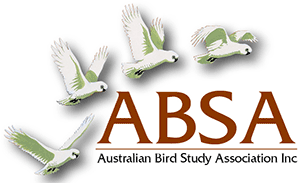Parental time-budgets, breeding behaviour and affinities of the Red Goshawk Erythrotriorchis radiates
| Posted: |
29/11/2015 |
| Author(s): |
D. J. Baker-Gabb, S. J. S. Debus, T. A. Aumann |
The breeding behaviour of the Red Goshawk
Erythrotriorchis radiatus was studied in Kakadu National Park, Northern Territory, in 1987–89. Two active nests, for all or part of the breeding cycle from courtship and nest-building (April) to the post-fledging period (October), were observed in timed observation sessions. One nest-building male collected sticks at a rate of 0.4–0.6/hour, and the female at 0.1–0.3/hour; this male fed the female 0.1 prey item/hour and copulated 0.3–0.4 times/hour. The female attended the nest for 81 percent of observation time (incubating 50%, shading 31%). In the nestling period, females progressed from brooding, to standing on the nest (often shading the chicks) to perching in the nest area as the chicks grew, and males delivered prey (0.2–0.3 item/hr). Males did not incubate, and spent little time at the nest when females were present. The prior suggestion of bigamy at one of these nests is revised on the available evidence. The behavioural data in this paper, combined with new DNA evidence, are used to evaluate the Red Goshawk’s taxonomic status. The Red Goshawk’s genetic link with
Accipiter, and possibly with the harriers
Circus, matches its behavioural, morphological and ecological characters, rather than those of the other Australian endemic hawk genera
(Lophoictinia and
Hamirostra, which are pernine kites). Lastly, an error in the labelling of Red Goshawk vocalisations in the primary literature is noted.
>> Download Abstract |
File Size: 329KB
>> Download Complete PDF | File Size: 85kB
